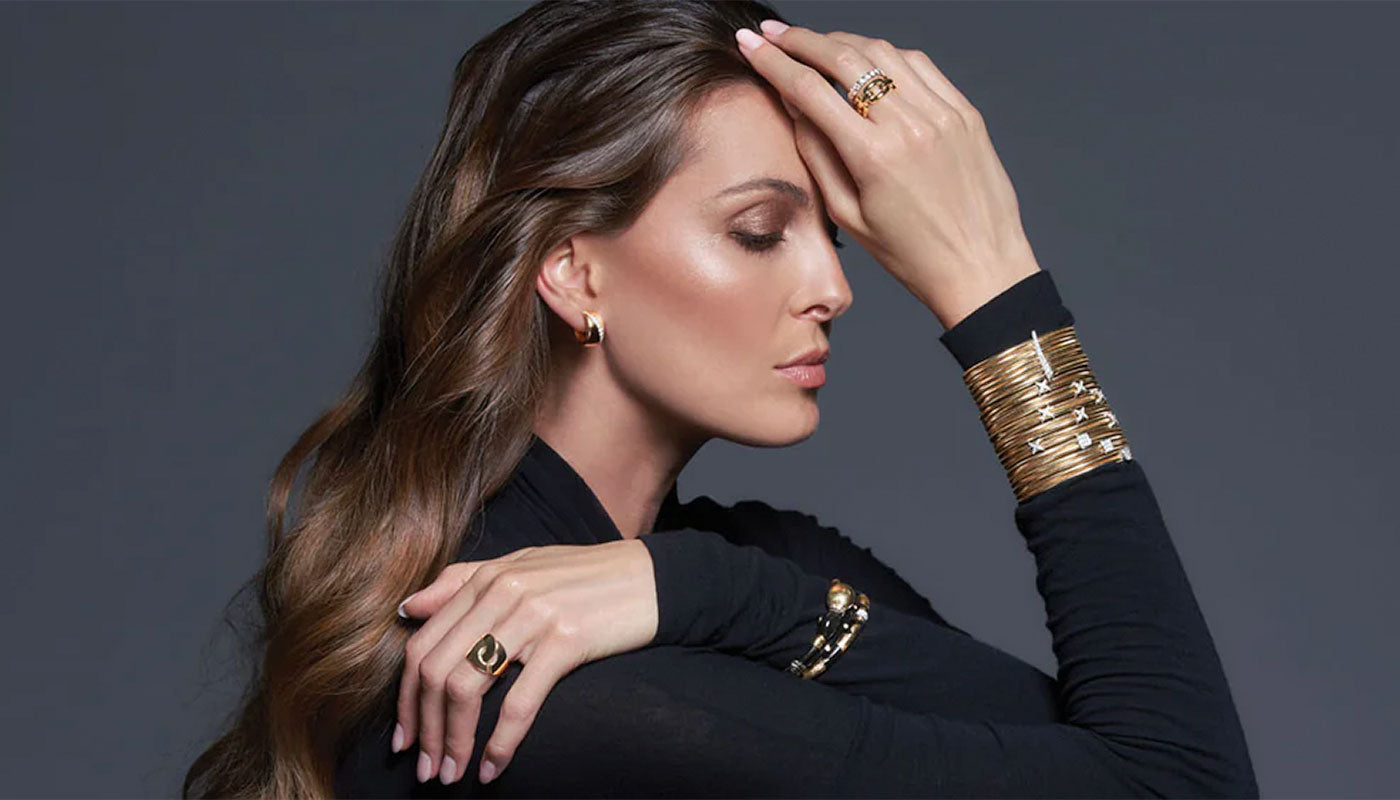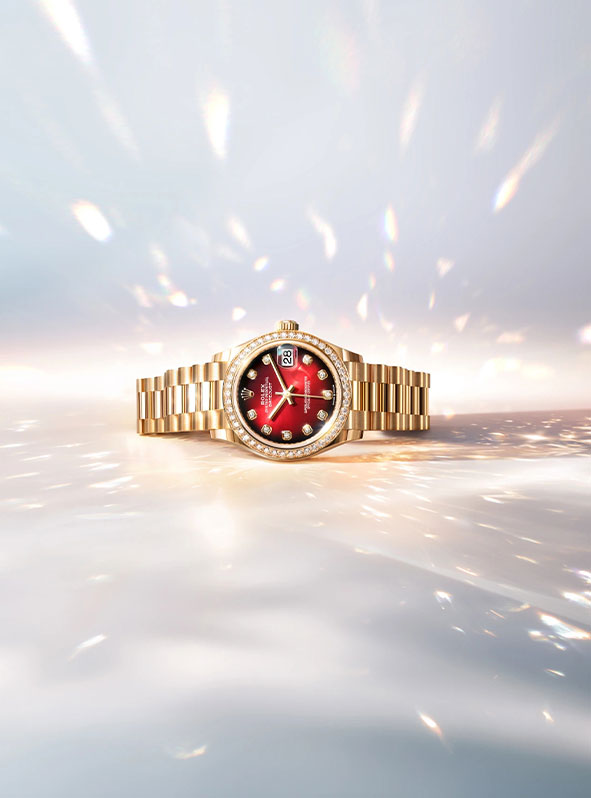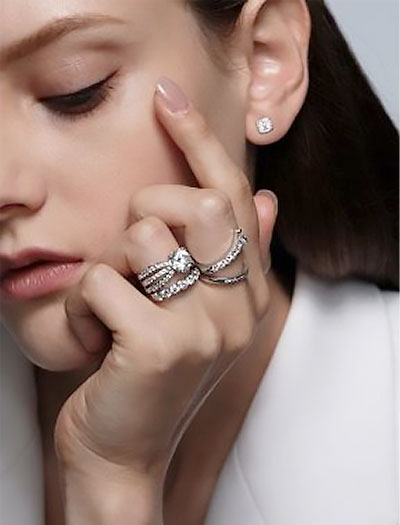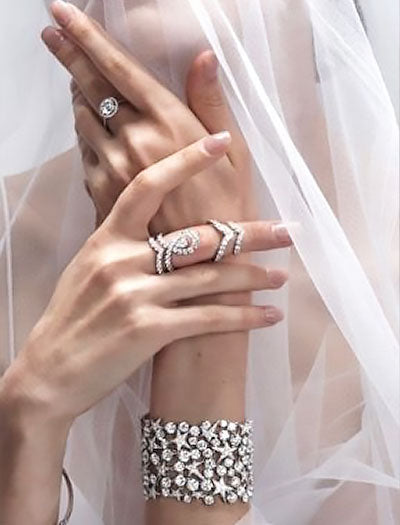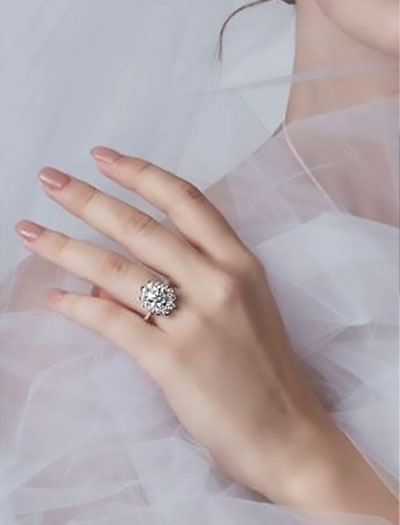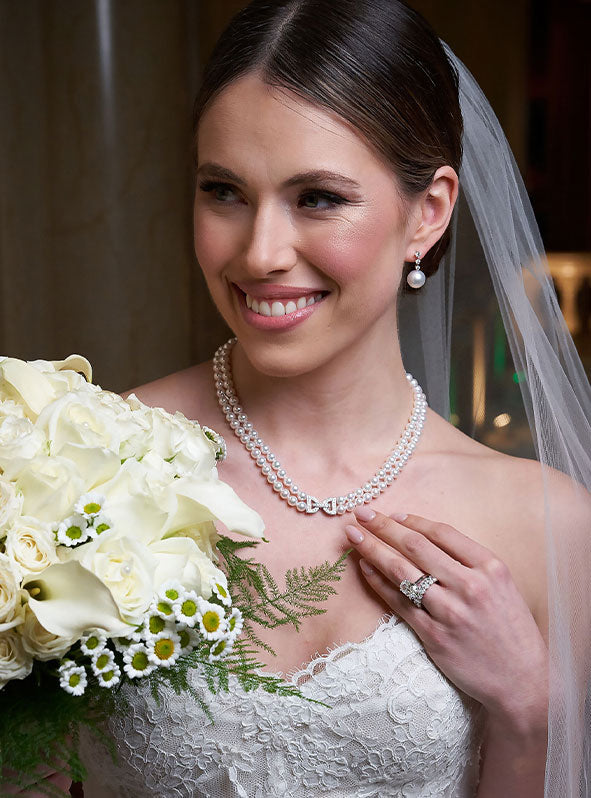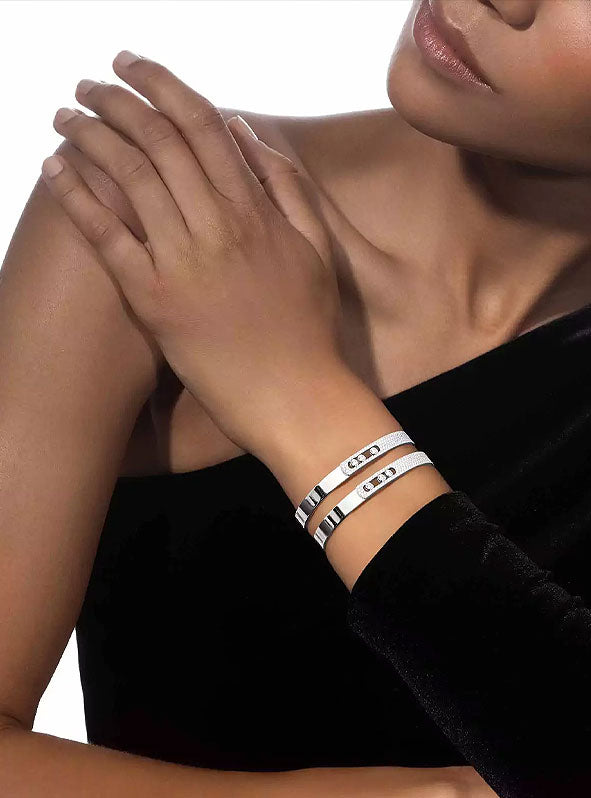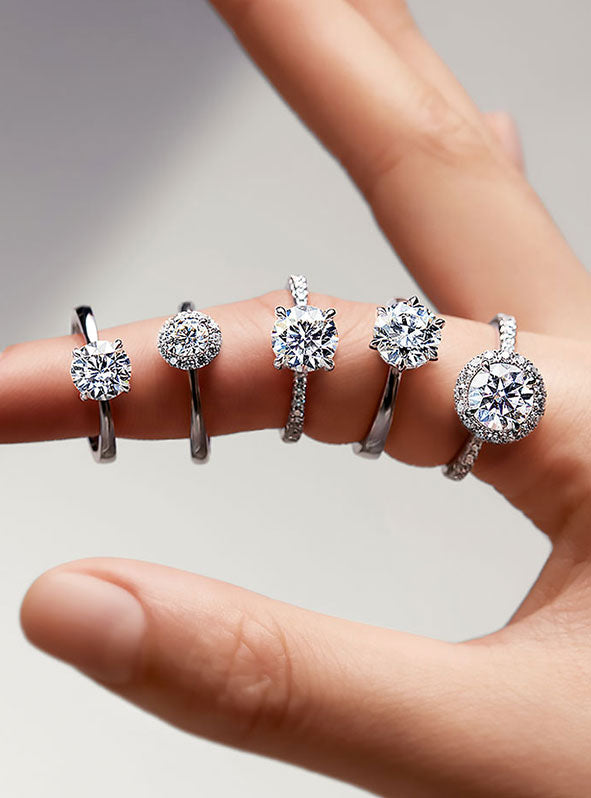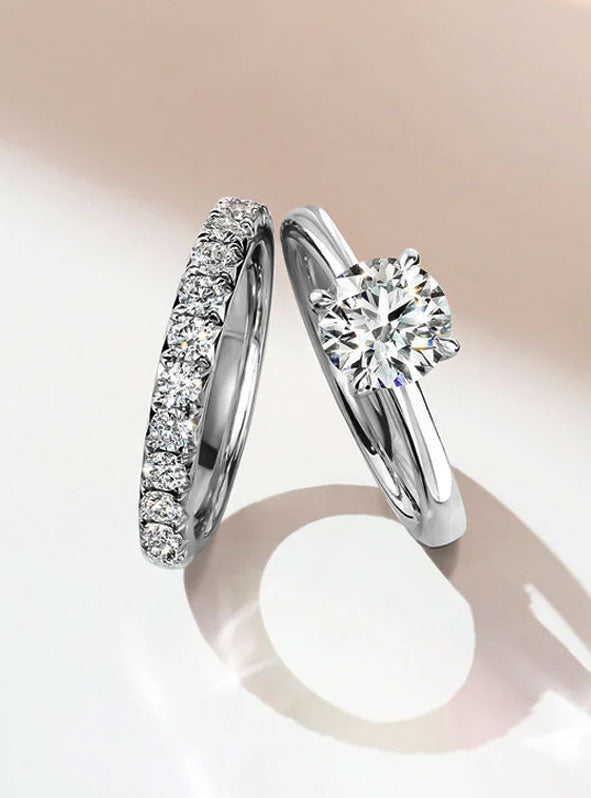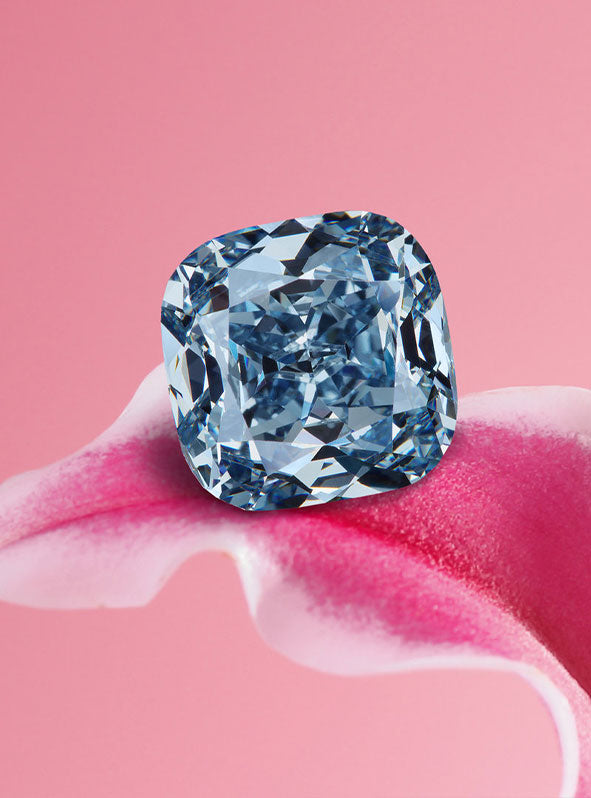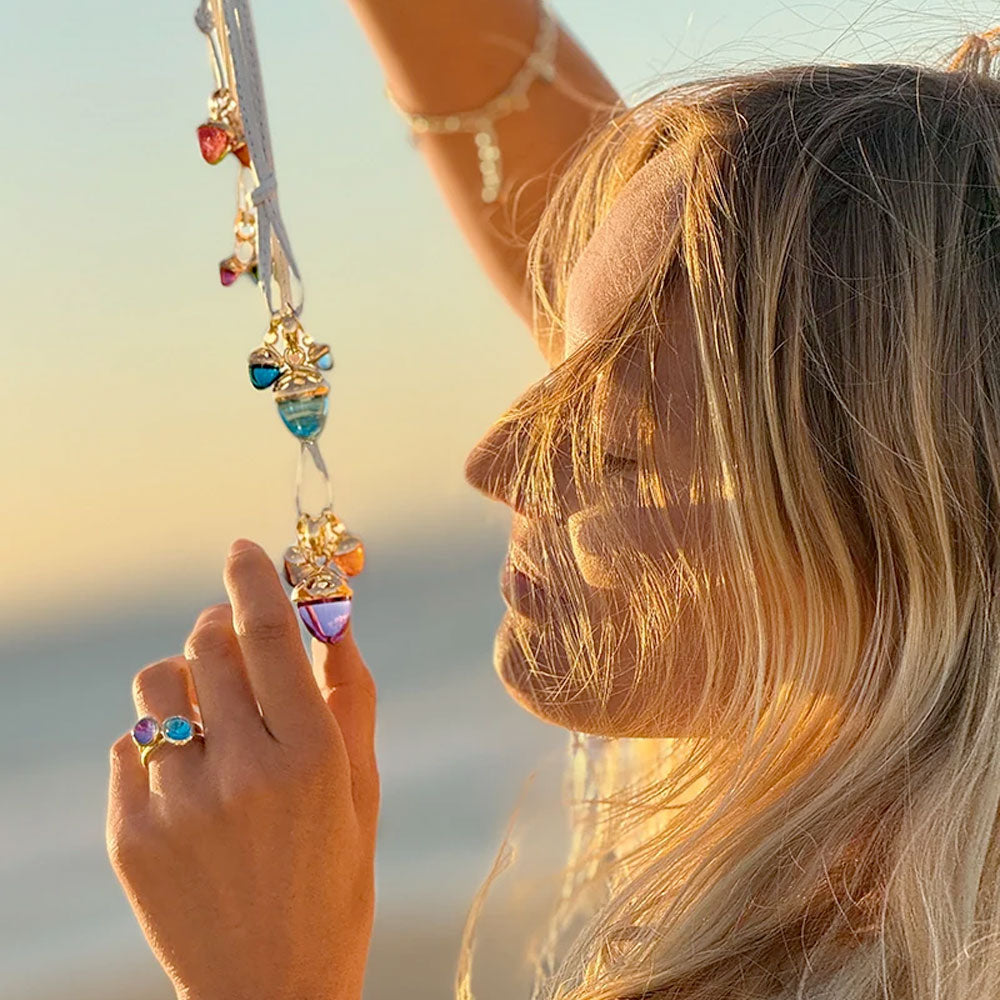Learn More
Precious Stones, Diamonds, Metals & More
What makes jewellery so precious and meaningful? Learn everything you need to know about choosing, buying and taking care of your valued pieces at Knar Jewellery. In addition to the information here, please connect with our knowledgeable staff to answer any further questions you may have.
Here’s a quick overview:
Birthstones
Your birthstone colours vary depending on which birthstone corresponds to your birth month. These gemstones not only have beautiful colours but also often carry symbolic meanings and are believed to have various properties and powers in different cultures.
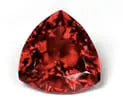
January is the Garnet…
Garnet is the modern January birthstone and the gem designated for the 2nd and 6th wedding anniversary. Safety in travel, victory in battle, protection from snakebites and loyalty in love – these are just a few of the meanings attributed to January’s birthstone. While it doesn’t enjoy the same wealthy reputation as diamonds, rubies, sapphires and emeralds, the garnet is one of the most richly detailed stones when it comes to legends and myths.
The name of the stone “garnet” comes from the Latin word for pomegranate, whose glistening, jewel-like seeds are the most common form garnet resembles. Because of that association, garnets acquired many of the qualities and myths associated with the seeded fruit. Like the pomegranate, the garnet is said to confer fertility and bring righteousness and healing – making it the perfect stone to be given as an engagement gift. In fact, long before diamonds took that title, garnets were a traditional engagement stone.
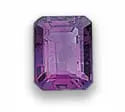
February is the Amethyst…
February’s birthstone, Amethyst, is said to impart clarity of thought to those who wear it. Its purple colour makes it also a stone of royalty. Amethyst was believed to be sacred to Buddha, and Tibetan prayer beads are often made of amethyst for that reason. Of all the birthstones, amethyst is the one most revered for spiritual healing and mental cleansing. The gift of Amethyst is symbolic of protection and the power to overcome difficulty. It is said to strengthen the bond in a love relationship, so it is an ideal anniversary or engagement gem. Whether or not Amethyst holds such power, its stunning beauty will certainly make anyone who wears it feel like royalty!
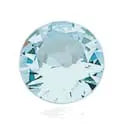
March is the Aquamarine…
Whether you are a sailor or not, March’s birthstone is an extraordinary choice for a gift! March’s birthstone is Aquamarine, a great member of the beryl gemstone family. It’s been used in jewellery manufacturing since the third century BC. Because of its water like colours, it has been called for hundreds of years “The sailor’s stone”. It was thought that it protected sailors and travellers over seas.
This precious stone is tough, durable and takes an excellent polish. It can be worn in rings and bracelets with minimal risk if the settings are designed to protect the gems. A gift of Aquamarine symbolizes both safety and security, especially within long standing relationships. Some people even say that the Aquamarine reawakens love in a tired marriage, so if you want to bring back that spark in your partner’s eyes, you might consider this gem as an anniversary gift!
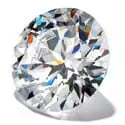
April is the Diamond…
April’s main birthstone, the Diamond, has been lauded in song and movies as the promise of forever. A diamond can speak volumes. It can say “I love you”, “I’m proud of you” and “I’d marry you all over again”. It shouts “Will you marry me?” and whispers “You’re enchanting and beautiful”. A diamond on the third finger of the left hand tells the world that your heart is taken. Diamonds can be worn by anyone. They are the classic symbol of achievement, of love and of promise.
April’s birthstone is remarkably simple in composition, yet stunning in its unique ability to reflect and refract light into vivid flashes of brilliant colour. The ancient Hindus called the Diamond “Vajra,” meaning lightening, both because of the sparks of light thrown off by this gem as well as its invincible strength. The Diamond is harder than any other substance on earth.

May is the Emerald…
Emerald is the birthstone for May and also the traditional gift for the 55th wedding anniversary. Emeralds are thought to enhance the clairvoyance of their wearers. Traditionally, emeralds are worn to promote healing and enhance love and contentment. The wonderful green colour of emerald is unparalleled in the gem kingdom. Emerald’s precious green colour is caused by small amounts of chromium and enhanced by traces of iron. Unlike other beryls, emeralds usually contain inclusions and other flaws. These flaws are not looked on as negative aspects for emerald like they would be for other gemstones. Indeed, these flaws are considered part of the character of the stone and are used to assure the purchaser of a natural stone.
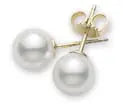
June is Pearl …
Pearl is the official birthstone of the month of June. It is also the accepted anniversary gemstone for the 3rd and 30th years of marriage. Pearls have adorned crowns, clothing, and temples, and were said to be a favourite of Cleopatra, yet there are perfectly suited to young girls and are a popular gift for first communion.
Pearls come in a wide range of colours from delicate rose white to black. The higher the luster or “orient” of a pearl, the more valuable the specimen. Greeks believed that pearls were the hardened tears of joy that the Love Goddess shook from her eyes as she was born from the sea. In Arab legend, pearls were formed when oysters were lured from the depths of the ocean by the beautiful moon and then swallowed moonlit dewdrops. Ancient Chinese thought that these gems originated from the brains of dragons.
View our pearl jewellery collection including incredible designs from world renowned pearl jewellery designer Mikimoto & Gellner.
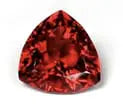
July is Ruby…
Ruby is the birthstone for July and also the anniversary gemstone for the 15th and 40th years of marriage. The history of ruby mining dates back more than 2,500 years, and today the coveted gemstone is found in Burma, Thailand, Kenya, India, Sri Lanka, Australia, Cambodia, Afghanistan, Pakistan, and the United States.
Called the “Lord of Gems” by ancient Hindus, rubies are one of the most highly prized gems throughout history. The fiery glow of rubies is said to come from the gemstone’s internal and eternal flame. For this reason, the gift of a ruby is a symbol of everlasting love. If worn on the left hand, ancient lore has it that the Ruby will bring good fortune. It is a perfect engagement ring gemstone and a popular alternative to or addition to diamond engagement bands.
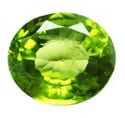
August is Peridot…
Peridot is considered a tonic for the whole body and protects the wearer from negativity. It is associated with stress reduction and relaxation. Egyptians used peridot to clean and heal the heart. Powdered peridot has been used to cure asthma and a peridot placed under the tongue of someone in the grip of a fever is said to lessen his or her thirst. One legend says that drinking from a peridot goblet will increase the potency of medicines. Further research indicates that ancient Indo-Iranians, and Vedic and Persian cultures may have used cups carved from Peridot for their ritual drink of Soma.
The force of nature is alive within a Peridot, making a gift of this gemstone symbolic of vitality. It signifies strength, both individual and within a relationship, as well as the promise of new growth in years ahead.
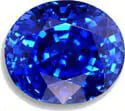
September is Sapphire…
September’s birthstone is the beautiful blue stone Sapphire. It was first discovered in ancient India and over the millennia there were found numerous other deposits all over the world. These days, sapphire is the September birthstone, the fifth and 45th wedding anniversary stone, and the zodiac gem for Taurus.
The sapphire was said to represent the purity of the soul. Before and during the Middle Ages, it was worn by priests as protection from impure thoughts and temptations of the flesh. Medieval kings of Europe valued these stones for rings and brooches, believing that it protected them from harm and envy. Warriors presented their young wives with sapphire necklaces so they would remain faithful. It was believed that the stone’s colour would darken if worn by an adulterer or adulteress, or by an unworthy person.
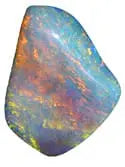
October is Opal & Tourmaline…
Opal is the modern birthstone and the accepted gem for the 13th wedding anniversary. The opal is often considered to be the most beautiful and desirable of all gems because it is highlighted with all the colours of the rainbow. Blondes are supposed to have a special fondness for opal necklaces which were believed to guard the colour of their hair!
Not many know that Opal is actually the national gemstone of Australia which produces most of these more than 95% of the black and white opals and offers large quantities of other precious colour varieties.
October’s alternate birthstone is the Tourmaline.

November is Citrine…
November’s gemstone, Citrine, is as warm as a Van Gogh painting of sunflowers. The name Citrine comes from an old French word, “citrin”, meaning lemon. One of the more rare forms of quartz, this gemstone ranges in colour from the palest yellow to a dark amber named Madeira because of its resemblance to the red wine.
A gift of Citrine is symbolic for hope and strength. With its sunny brightness, this gemstone is ideal for helping anyone to get through the tough times in life!
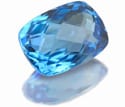
December is the Blue Zircon…
Zircon is a beautiful and under appreciated gemstone, whose fame and popularity have been usurped by the newer fake diamond, cubic zirconia. Zircon is a gemstone of many colours, made of the mineral zirconium silicate. Zircon varieties can be colourless, yellow, blue, green, red, orange, brown, and most rarely purple. With its wide range of colours, zircon has been used to fake or substitute for almost every precious gemstone.
According to Indian Hindu mythology, Zircon was one of the many gemstones of the ‘Kalpa Tree’. The mythological tree was a symbolic offering to the gods, and was described by Hindu poets of the 19th century as a glowing ensemble of precious stones like sapphires, diamonds and topaz. Green zircon was said to represent the lush green foliage of the tree.
In some parts of the world zircon was believed to protect the wearer from traveller’s diseases, injuries and to ensure a good sleep and a warm welcome to new places. In Europe, during the Middle Ages, zircon was said to bring peaceful sleep and prosperity. It was also believed to have a cosmic connection to the planet Pluto.
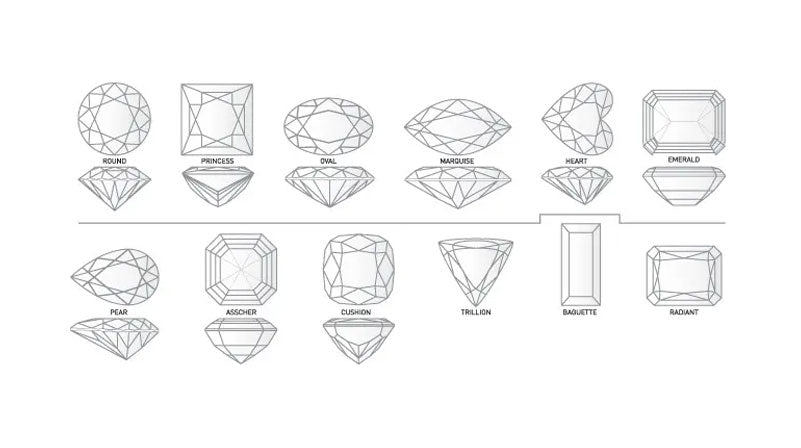
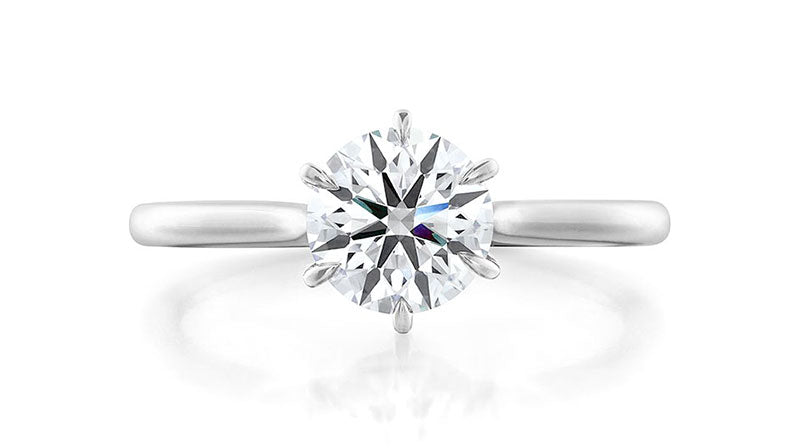
Diamonds
A Few Words About Cut
You probably already know that diamonds are graded on the “four C’s”; clarity, colour, cut and carat weight. It is also important to understand however, that aside from the diamond size (carat weight), cut is the most important.
Cut refers to the overall proportions of a diamond, the symmetry of the diamond and the quality of polish applied to the diamond. Without a good quality cut, the cleanest, whitest diamond in the world will not shine. The quality of a diamond’s cut directly affects the beauty of a diamond.
Most “ideal” cut diamonds are measured using only 16 of a diamond’s 56 facets. At Knar Jewellery, we look at all aspects of a diamond’s cut to offer you the brightest diamond possible.
Some of the brightest diamonds we carry are from the Hearts on Fire® Round and Dream diamond collections. Hearts on Fire® has built their reputation on creating the world’s most perfectly cut diamond, and that is why we love this brand.
We have helped many people choose fabulous ideal cut diamonds over the years. No one has ever come back and said: “I wish I selected a poorer quality diamond!”
Diamonds
When it comes to ideal cut diamonds, seeing truly is believing. Visit any of our locations for a demonstration of our popular Hearts on Fire®, Mémoire, Jack Kelége or Forevermark collections, or call to book a one-on-one consultation with one of our diamond experts to learn more about diamonds in general.
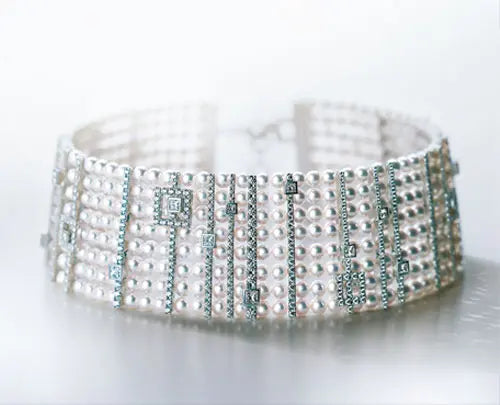
Pearls
A Long History Of Pearls & Weddings
Since ancient times, the pearl has been a symbol of unblemished perfection. It is the oldest known gem, and for centuries it was considered the most valuable. Pearls have been considered ideal wedding gifts because they symbolize purity and innocence. In the Rigveda (an ancient Hindu book dating back to 1000 B.C.) Krishna, the preserver, brought forth pearls from the depths of the sea to give to his daughter on her wedding day. Thus started the tradition of giving pearls to the bride.
The ancient Greeks also thought that pearls should be part of the wedding experience because they believed that pearls would help ensure marital bliss and prevent newlywed brides from crying.
During the Crusades, gallant knights returning from the Holly Lands would bestow pearls to their “fair ladies” for their wedding days.
In the fourteenth and fifteenth centuries, pearls were at the height of wedding fashion with royal weddings in the French House of Burgundy taking place in a “sea of pearls”. Everyone from the bride to her male guests were adorned in glowing pearls.
From Queen Elizabeth I to our modern Queen Elizabeth II, the tradition of wearing pearls on the wedding day has continued to this day. Often the father of the bride or the groom gives the bride the gift of pearls. Many brides also give their bridesmaids pearl necklaces, bracelets or earrings. Pearls are the classic gift that can be worn and enjoyed for a lifetime.
Did You Know?
Precious Metals
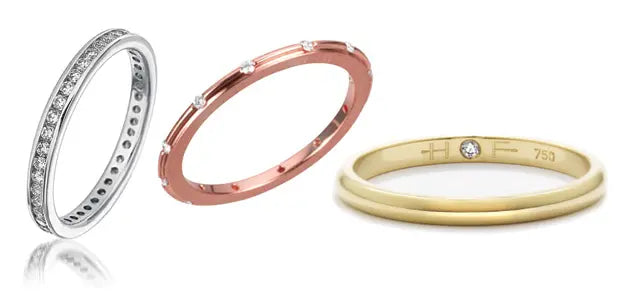
The Differences Between Gold & Platinum are an important thing to understand when choosing an engagement ring or wedding band. If you are unsure what metal to select, consider the following key differences:
Durability:
Platinum is the strongest, most pure metal and because it is very resistant to damage it will easily last a lifetime. 18kt gold is softer and therefore not as durable, however it is the most popular choice for engagement rings.
Maintenance & Repair:
Platinum will not wear away or tarnish, but it can take on a satin hue and, because it is so strong, it can be hard to repair or polish. Because 18kt gold is softer it can wear away over the years, but this also makes it more malleable and easier to polish and repair.
Price:
Platinum is rarer than gold, harder to craft and is therefore more expensive. Buyer beware – Not all platinum craftsmanship is created equal!
